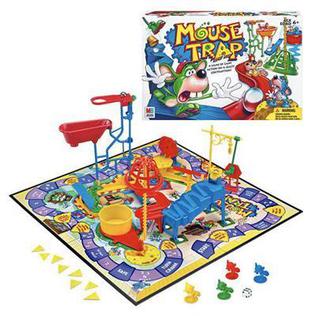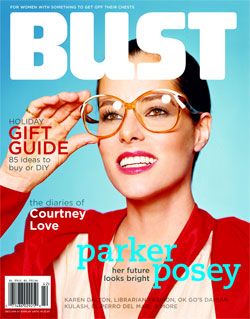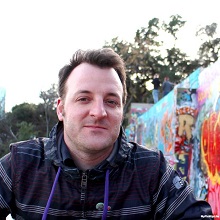
"Do it yourself" ("DIY") is the method of building, modifying, or repairing things by oneself without the direct aid of professionals or certified experts. Academic research has described DIY as behaviors where "individuals use raw and semi-raw materials and parts to produce, transform, or reconstruct material possessions, including those drawn from the natural environment ". DIY behavior can be triggered by various motivations previously categorized as marketplace motivations, and identity enhancement.
O'Reilly Media, Inc. is an American learning company established by Tim O'Reilly that provides technical and professional skills development courses via an online learning platform. O'Reilly also publishes books about programming and other technical content. Its distinctive brand features a woodcut of an animal on many of its book covers. The company was known as a popular tech conference organizer for more than 20 years before closing the live conferences arm of its business.

Mouse Trap is a board game first published by Ideal in 1963 for two to four players. It is one of the first mass-produced three-dimensional board games. Players at first cooperate to build a working mouse trap in the style of a Rube Goldberg machine. Then, players turn against each other to trap opponents' mouse-shaped game pieces.

A Renaissance Festival is an outdoor gathering that aims to entertain its guests by recreating a historical setting, most often the English Renaissance.

Bust is a women's lifestyle magazine that is published four times a year. The magazine was started by Debbie Stoller and Laurie Henzel and is currently published by Street Media LLC. Bust covers music, news, crafts, art, sex, and fashion from an independent ("indie"), third wave feminist perspective. The magazine's slogan is "For women with something to get off their chest."

Dale Dougherty is a co-founder of O'Reilly Media, along with Tim O'Reilly. While not at the company in its earliest stages as a technical documentation consulting company, Dale was instrumental in the development of O'Reilly's publishing business. He is the author of the O'Reilly book sed & awk.

Maker Faire is a convention of do it yourself (DIY) enthusiasts established by Make magazine in 2006. Participants come from a wide variety of interests, such as robotics, 3D printing, computers, arts and crafts, and hacker culture.

Edinburgh Science, founded in 1989, is an educational charity. It organises a two-week Edinburgh's annual Science Festival, the world's first public celebration of science and technology, and still one of Europe's largest. Alongside the annual Festival in Edinburgh, the organisation has a strong focus on education and runs touring programme Generation Science that visits schools around Scotland throughout the year. Edinburgh Science also operates a large-scale international programme of work under the Worldwide arm. It regularly presents events overseas and has been the major programming partner of the annual Abu Dhabi Science Festival, helping to curate, produce, and deliver the event.

Diana Eng is a Chinese-American fashion designer, author and fashion technologist based in New York. She is best known as contestant on the second season of the reality television program Project Runway. Eng is a co-founder of an art/electronic group called NYC Resistor, and authored a book called Fashion Geek.

Jim Warren was an American mathematics and computing educator, computer professional, entrepreneur, editor, publisher and continuing sometime activist.
Craft: was a quarterly magazine published by O'Reilly Media which focused on do it yourself (DIY) projects involving knitting, sewing, jewelry, metalworking, woodworking, and other disciplines. The magazine was marketed to people who enjoy "crafting" things and features projects which can often be completed with cheap materials, including household items. The magazine was in circulation between 2006 and 2009.
ReadyMade was a California, United States, bimonthly magazine which focused on do-it-yourself (DIY) projects involving interior design, making furniture, home improvement, sewing, metalworking, woodworking and other disciplines. It also focused on sustainable design, independent music and DIY culture. The magazine was marketed to people who enjoy creating unique items to have at home and wear and featured projects which could often be completed with everyday materials, such as household items.

A hackerspace is a community-operated, often "not for profit", workspace where people with common interests, such as computers, machining, technology, science, digital art, or electronic art, can meet, socialize, and collaborate. Hackerspaces are comparable to other community-operated spaces with similar aims and mechanisms such as Fab Lab, men's sheds, and commercial "for-profit" companies.

The maker culture is a contemporary subculture representing a technology-based extension of DIY culture that intersects with hardware-oriented parts of hacker culture and revels in the creation of new devices as well as tinkering with existing ones. The maker culture in general supports open-source hardware. Typical interests enjoyed by the maker culture include engineering-oriented pursuits such as electronics, robotics, 3-D printing, and the use of computer numeric control tools, as well as more traditional activities such as metalworking, woodworking, and, mainly, its predecessor, traditional arts and crafts.

Becky Stern is a DIY expert based in New York City. Her work combines basic electronics, textile crafts, and fashion.

Critical making refers to the hands-on productive activities that link digital technologies to society. It was invented to bridge the gap between creative, physical, and conceptual exploration. The purpose of critical making resides in the learning extracted from the process of making rather than the experience derived from the finished output. The term "critical making" was popularized by Matt Ratto, an associate professor at the University of Toronto. Ratto describes one of the main goals of critical making as a way "to use material forms of engagement with technologies to supplement and extend critical reflection and, in doing so, to reconnect our lived experiences with technologies to social and conceptual critique." "Critical making", as defined by practitioners like Matt Ratto and Stephen Hockema, "is an elision of two typically disconnected modes of engagement in the world — "critical thinking," often considered as abstract, explicit, linguistically based, internal and cognitively individualistic; and "making," typically understood as tacit, embodied, external, and community-oriented."

Mike Warren is a product designer, inventor, and best-selling author based in San Francisco. He builds functional open source prototypes in line with the maker culture, and are carefully documented to inspire others to follow along. As an advocate for sharing educational content, his work aims to lower the barrier to participation, and transfer a static audience to an active participant.
The Neverwas Haul is a three-story, self-propelled mobile art vehicle built to resemble a Victorian house on wheels. Inspired by the fantastical stories of Jules Verne and H.G. Wells, the Haul was designed by Shannon O’Hare and built by a crew of volunteers at the Shipyard art space in Berkeley, CA, in 2006. Originally intended to be a ‘mutant vehicle’ for the Burning Man art festival in Nevada, the Haul is made from 75% recycled materials, and measures 24 feet long, 24 feet high, and 12 feet wide. It is built on the base of a fifth-wheel trailer, and the second and third story of the structure pack down into the first for highway towing. When fully built and decked out for exhibition at Burning Man, the Haul is able to propel itself at a top speed of 5 miles per hour and requires a crew of ten people to operate safely. Currently, the Neverwas Haul makes her home at Obtainium Works, an “art car factory” in Vallejo, CA, owned by O’Hare and home to several other self-styled “contraptionists.”
Maker education closely associated with STEM learning, is an approach to problem-based and project-based learning that relies upon hands-on, often collaborative, learning experiences as a method for solving authentic problems. People who participate in making often call themselves "makers" of the maker movement and develop their projects in makerspaces, or development studios which emphasize prototyping and the repurposing of found objects in service of creating new inventions or innovations. Culturally, makerspaces, both inside and outside of schools, are associated with collaboration and the free flow of ideas. In schools, maker education stresses the importance of learner-driven experience, interdisciplinary learning, peer-to-peer teaching, iteration, and the notion of "failing forward", or the idea that mistake-based learning is crucial to the learning process and eventual success of a project.
Ryan C. Doyle is a visual artist known for his large-scale fabricated sculptures, parade floats, art cars, and sculptures, sometimes involving robotics, animatronics, pyrotechnics, and military technologies. He is from the Twin Cities, Minnesota, and resides in Detroit, Michigan, where he has contributed to permanent installations at The Lincoln Street Art Park and Recycle Here! recycling center.














